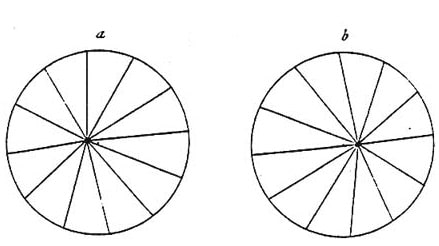The First Stereoscopic Image Pairs?
The historical origin of the initial understanding of the perception of depth from stereo image pairs begins with the 1838 report by the British physicist Sir Charles Wheatstone. Wheatstone wrote his paper prior to the first report of the development of photography in 1838. To illustrate his understanding of the phenomenon, he drew examples of stereoscopic image pairs. Some of these are shown here.
Another British physicist at the time, Sir David Brewster, disputed Wheatstone’s priority. Brewster asserted that Wheatstone’s discovery was preceded by Italian artist Jacopo Chimenti. His evidence? A pair of images by the artist produced around 1600.
Were there earlier stereo image pair art works? A report in 2013 proposed that the Mona Lisa on display at the Louvre in Paris and a second version of the painting on display at the Prado Museum in Spain form a stereo pair. Decide for yourself.
Are there any other early artistic stereo pairs? This project proposes that another painting may provide an early example of a stereo pair. The painting is at the Tate Museum in London. It is entitled “The Cholmondeley Ladies”, painted by an unknown artist circa 1600 – 1610. Parts of the painting viewed cross-eyed seem to offer a greater sense of depth than the monocular clues alone provide. The entire painting, and individual parts are presented here. Decide for yourself!












